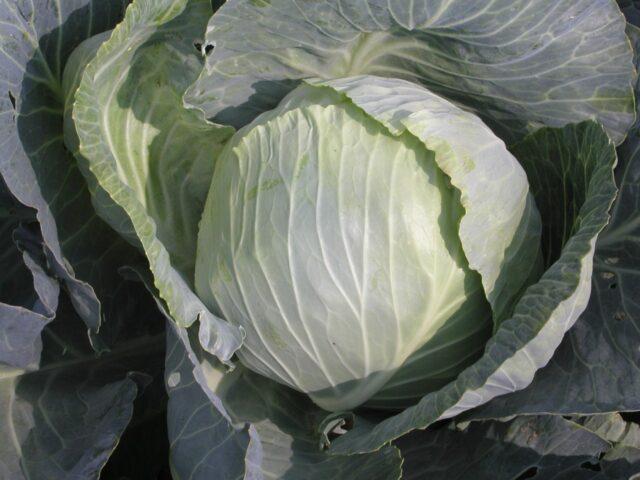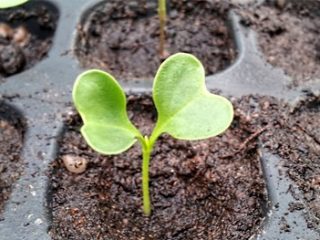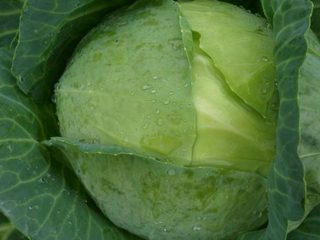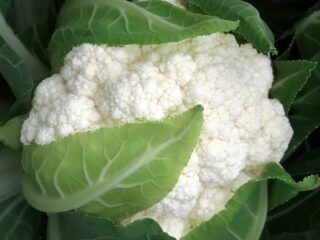Content
Not many gardeners can boast of an excellent cabbage harvest. The formation of healthy and tasty heads of cabbage is the key not only to good care, but also to the correct choice of variety. Vegetable growers already have favorite types of cruciferous vegetables, but this is not a reason to skip new crop hybrids. This is exactly what Vestri F1 cabbage is, which, with proper care, can produce a high yield with excellent taste and commercial qualities.

Vestri F1 cabbage has an attractive appearance and is in great demand in the market
Description and characteristics of Vestri cabbage
Vestri cabbage F1 is a hybrid variety, the ancestors of which are wild European and African species of this crop. If you believe history, it was first grown in Ancient Spain, then it appeared in Greece and Egypt. The culture was no less widespread in Rus', where farmers treated its cultivation with special trepidation.
As a result, the development of the variety was undertaken by Dutch breeders of the Monsanto company, who improved its basic qualities, improving yield indicators. The Vestri hybrid was included in the State Register of Russia in 2006; it was zoned for the Central, Volga-Vyatka regions, as well as for cultivation in the Urals and Siberia.
Vestri F1 cabbage is distinguished by a large head of cabbage with a raised rosette. The stalk is of medium length, the leaf blades are large and thin, with a wavy edge. Their color changes from dark to light green with a white waxy coating.
The heads of cabbage are formed almost all of the same size, round in shape, their weight reaches approximately 5 kg. Density is rated 4 out of 5.
The root system of the Vestri plant is strong, medium-depth. But the variety is still considered whimsical, requiring proper care and timely watering.
The taste qualities of Vestri F1 cabbage are highly rated. The leaves have virtually no bitterness. It is universal in application. Cabbage can be consumed fresh or cooked. It is suitable for frying, stewing, boiling and sourdough.
Productivity
The Vestri F1 cabbage variety is mainly grown for industrial purposes. The hybrid showed high productivity; on average, it brings up to 55-75 tons per hectare. The highest yield of cabbage was noted at 87 tons per hectare.
Advantages and disadvantages of the variety
From the description of the Vestri F1 variety, one can understand that cabbage has many positive aspects, among which it is worth highlighting its high taste. The vegetable does not lose its properties even after heat treatment.

Vestri F1 cabbage is quite juicy and crispy
Pros:
- the plant easily tolerates changes in weather conditions and is not afraid of low temperatures;
- heads of cabbage are formed uniform and of the same size;
- fruit weight can reach 8 kg;
- high productivity;
- excellent taste;
- good presentation;
- not afraid of long-term transportation;
- cabbage is not prone to Fusarium (infectious) wilt;
- universal application.
Minuses:
- whimsical and demanding care;
- needs regular watering;
- has low keeping quality compared to other varieties;
- Vestri grows poorly in greenhouse conditions.
Features of cultivation
Vestri F1 cabbage is grown in seedlings. But it should be taken into account that in closed beds the plant develops slowly, and when planted in open ground its productivity decreases.
Growing through seedlings
Sowing Vestri F1 cabbage seeds for seedlings, depending on the region, begins from mid-March to mid-April. The preparation of seed material consists of several stages:
- Calibration is a procedure for weeding out unsuitable seeds. This is done by soaking in a saline solution. If, half an hour after being lowered into the water, a certain number of seeds float, they are removed, and those that sank to the bottom are used for sowing.
- Disinfection - for this purpose, Vestri seeds are wrapped in several layers of gauze and dipped for 20 minutes in water warm to 50 ºC, then placed in cold water for 2-3 minutes.
- Soaking is a procedure necessary to accelerate germination. To do this, the seeds are dipped in a nitrophoska solution for 12 hours.
- Hardening, in which seeds wrapped in gauze are placed in the refrigerator overnight and left at room temperature during the day.The procedure is repeated twice.
After preparing the seeds, they begin to sow them. To do this, prepare containers with the substrate. You can take it universally from a specialty store or mix it yourself by combining equal parts of earth and humus with the addition of wood ash.
Seeds are distributed in 2-3 pieces. per container, deepening by 0.5-1 cm. Sprinkle soil mixture or sand on top, then moisten well with a spray bottle. The container with the crops is covered with polyethylene or glass.
After 5-7 days of seedlings appearing, the shelter is removed and the sprouts are transferred to a room with a temperature of +15 to +18 ºC, ensuring regular watering. And two weeks before planting in open ground, they begin to harden the seedlings. In the second half of spring, seedlings are transplanted into beds.
Seedless method
If it is impossible to grow seedlings, you can sow the seeds immediately in open ground. Planting is carried out in mid-May, when the temperature is +18 ºC. Seeds are sown evenly, maintaining a distance between rows of at least 50-60 cm. Plants should also be positioned at least 40 cm from each other.

The seeds are deepened into the soil by 1.5-2 cm, then sprinkled with soil and watered well.
Diseases and pests
Vestri F1 cabbage has good immunity to diseases, but the plant must be protected from pests.
Clubroot is considered the most dangerous disease for the crop. This is a fungal infection that requires immediate removal. Afterwards, the soil around the Vestri cabbage bush is sprinkled with lime.If the disease is detected, it is recommended not to grow cruciferous vegetables in this area for the next year and the next five years.
Among the insects harmful to Vestri it is worth noting:
- aphids and butterflies;
- cruciferous flea beetle;
- cabbage leaf beetle (babanukha);
- cabbage moth caterpillars;
- baride;
- whitefly
The main method of preventing the appearance of insects is the careful preparation of beds for Vestri. Spraying cabbage bushes with burdock infusion also helps. When any of the listed insects appear, they are first removed mechanically; invasion in large numbers requires the use of insecticides.
Further care
The hybrid cabbage variety Vestri F1 is quite whimsical. For the full development of the plant and obtaining a good harvest, regular watering and fertilizing is important.
After transplanting seedlings into open ground, it is necessary to moisten the soil 2-3 times a week. And during the period of formation of heads of cabbage, watering is carried out daily, but weather conditions are monitored. If it is cloudy or rains frequently, then stop irrigation until the top layer of soil dries out.
A month before harvesting, watering must be reduced to 1-2 times every ten days, and two weeks before harvesting the heads of cabbage it should be stopped completely.
After watering, it is recommended to loosen the soil, which will ensure easy access of oxygen to the roots. Weeding is also done to remove weeds.
Hilling is necessary to stimulate the development of adventitious roots, which are necessary to increase the nutrition of the plant during the formation of heads of cabbage. This procedure is carried out 2-3 times per season.
Vestri F1 cabbage is fertilized about three times during the growing season.Ten days after transplanting into open ground, the seedlings are fertilized using a solution of mullein or chicken droppings in a ratio of 1 to 10. When heads are formed, the plant is fed with potassium-phosphorus compounds.
Harvest and storage
Vestri F1 cabbage reaches technical maturity already on the 85th day after planting in open ground. Harvesting begins in late July to early August. Heads of cabbage are cut with a sharp knife, pre-disinfected, 3-5 cm from the surface of the ground without capturing the lower leaves. The collected fruits are placed on a tray covered with straw or paper litter.

The best way to store cabbage at home is hanging
The heads of cabbage are stored in wooden boxes, each one first wrapped in parchment paper or cling film. The optimal temperature for storage is considered to be from 0-3 ºC, the recommended air humidity is up to 90%. The room should be well ventilated. Under such conditions, the heads of cabbage can last up to 2-3 months without loss of quality.
Conclusion
Vestri F1 cabbage, despite being difficult to grow, can please you with a large number of healthy heads of cabbage. In addition to its high yield, this variety is also famous for its excellent taste, which is why the hybrid is often cultivated for industrial purposes.
Reviews from gardeners about Vestri cabbage








